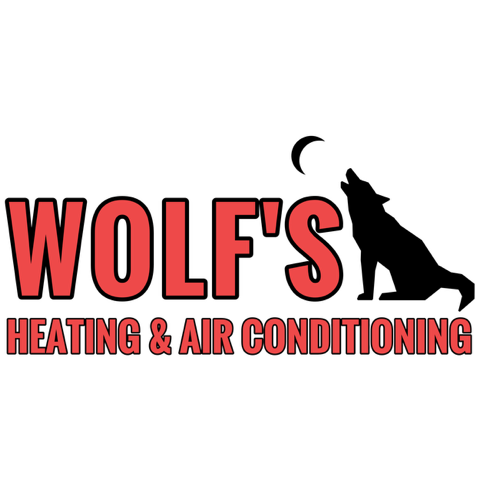
24 Mar How to Improve Indoor Air Quality as Allergy Season Approaches
How to Improve Indoor Air Quality as Allergy Season Approaches + 7 Powerful Tips to Breathe Easier
As allergy season approaches, many people find themselves struggling with sneezing, itchy eyes, and congestion. For those with allergies, maintaining clean indoor air becomes a top priority. Poor indoor air quality can exacerbate symptoms, making it essential to take action before allergy season fully kicks in. But don’t worry — improving your home’s air quality can help you breathe easier and reduce your discomfort. In this article, we’ll explore the impact of allergy season on indoor air quality and provide you with seven powerful tips to help you maintain a clean and healthy indoor environment.
Understanding the Impact of Allergy Season on Indoor Air Quality
As the weather changes and plants begin to bloom, pollen levels spike, and allergens find their way into homes. These particles can worsen allergy symptoms, especially if your indoor air quality is compromised. In fact, indoor air can often be more polluted than outdoor air, as dust, pet dander, and mold can accumulate inside and affect your respiratory health.
Why Indoor Air Quality Matters During Allergy Season
During allergy season, maintaining clean indoor air is crucial. Poor air quality can lead to a variety of health issues, including asthma, headaches, fatigue, and irritated eyes. By improving your indoor air quality, you can reduce allergens and create a safer environment for everyone in your home, especially those who suffer from allergies or respiratory issues.

Common Indoor Air Pollutants That Affect Allergies
Several indoor air pollutants contribute to allergy flare-ups. Let’s take a closer look at the most common culprits.
Dust Mites
Dust mites are tiny insects that thrive in warm, humid environments, often living in bedding, carpets, and upholstered furniture. These creatures feed on dead skin cells, and their waste products are potent allergens. Regular cleaning and humidity control can help reduce dust mite populations.
Pollen
Pollen is a significant outdoor allergen, but it can also affect indoor air quality. During allergy season, pollen can enter your home through open windows, doors, or on clothes. Once inside, it can cling to carpets, furniture, and clothing, making it important to keep your indoor environment sealed.
Pet Dander
Pet dander consists of tiny flakes of skin shed by cats, dogs, and other pets. These particles can stay suspended in the air and trigger allergic reactions in sensitive individuals. If you have pets, regular grooming and cleaning can help minimize the impact of pet dander.
Mold
Mold spores are another common allergen that can thrive in damp environments. Bathrooms, basements, and kitchens are particularly susceptible to mold growth. These spores can irritate the lungs and exacerbate allergy symptoms, so mold removal is essential for maintaining clean indoor air.
7 Powerful Tips to Improve Indoor Air Quality During Allergy Season
Improving your indoor air quality doesn’t require a complete overhaul of your home. Small changes and thoughtful practices can make a significant difference in how your space feels during allergy season. Here are seven powerful tips to help you breathe easier.
Tip 1: Use an Air Purifier
Air purifiers are highly effective in capturing airborne allergens like dust, pet dander, and pollen. When selecting an air purifier, choose one with a HEPA filter to ensure it traps even the smallest particles. Place air purifiers in high-traffic areas or rooms where you spend the most time, like your bedroom or living room.
Tip 2: Keep Your Home Clean and Dust-Free
Regular cleaning is one of the simplest ways to reduce allergens. Dusting surfaces, vacuuming carpets, and washing bed linens can help eliminate allergens before they have a chance to accumulate. Make sure to use a vacuum with a HEPA filter to trap small particles.

Tip 3: Control Humidity Levels
High humidity levels create the perfect environment for dust mites and mold. To keep humidity in check, use a dehumidifier or air conditioner, especially in damp areas like the basement. The ideal indoor humidity level is between 30% and 50%.
Tip 4: Regularly Change HVAC Filters
Your home’s heating and cooling system can circulate allergens throughout your space if the filters aren’t maintained. Change your HVAC filters regularly (at least every 3 months) and consider upgrading to a high-efficiency filter for better allergen removal.
Tip 5: Ventilate Your Home Properly
Proper ventilation is crucial for improving indoor air quality. Open windows during the early morning or late evening to let in fresh air while outdoor pollen levels are low. If you live in an area with high pollen counts, consider using a mechanical ventilation system to exchange indoor air with fresh air.
Tip 6: Remove Mold and Moisture Sources
Mold thrives in damp environments, so it’s essential to remove mold sources and repair any leaks in your home. Use a dehumidifier in areas prone to moisture and clean up any visible mold using a mixture of water and vinegar or hydrogen peroxide.
Tip 7: Keep Pets Clean and Groomed
Pets can introduce pet dander into your home, which can worsen allergies. Regularly bathe and groom your pets to reduce the amount of dander they shed. Additionally, designate certain areas in your home as pet-free zones, especially bedrooms.
FAQ
What are the best air purifiers for allergy sufferers?
Look for air purifiers with HEPA filters, as they effectively capture allergens like pollen, dust, and pet dander. Brands such as Honeywell, Dyson, and Levoit offer reliable models known for their high efficiency. Additionally, air purifiers with activated carbon filters can also help remove odors and VOCs, which are other common irritants. Ensure you choose a unit that’s the right size for your room to maximize effectiveness.
How often should I clean my home to reduce allergens?
To keep allergens under control, cleaning your home at least once a week is essential. Vacuum carpets, wipe down surfaces, and wash bedding regularly to remove dust, pet dander, and pollen. If you have pets or live in a high-pollen area, consider cleaning more frequently to reduce the buildup of allergens. Pay attention to less obvious places like vents, fans, and air ducts, which can harbor dust and allergens.
How does humidity affect indoor air quality?
Excess moisture can encourage the growth of mold, dust mites, and other allergens in your home. Keeping humidity levels between 30% and 50% helps prevent these issues and maintains a comfortable environment. Too much humidity can make the air feel heavy, while too little can dry out the respiratory system, causing irritation. Using a dehumidifier or air conditioner can help regulate humidity and improve overall indoor air quality.

Can plants improve indoor air quality during allergy season?
Certain plants, such as peace lilies and spider plants, can purify indoor air by removing harmful pollutants. However, be cautious with flowering plants, as they may release pollen, which can trigger allergies. Ensure your plants are placed in well-ventilated areas to avoid mold growth in the soil. While plants can improve air quality, it’s important to choose the right ones and maintain them properly to avoid exacerbating allergies.
Should I keep windows open during allergy season?
If pollen levels are low, opening windows can improve ventilation and allow fresh air to circulate, which helps reduce indoor pollutants. However, during peak allergy season, it’s better to keep windows closed to prevent pollen from entering your home. You can also use air exchange systems or air purifiers to ensure good airflow while minimizing allergen exposure. Be mindful of outdoor air quality to avoid worsening allergy symptoms indoors.
How can I prevent mold growth in my home?
To prevent mold, keep moisture levels low by using dehumidifiers and fixing any leaks promptly. Ensure that your home is well-ventilated, especially in areas prone to moisture like bathrooms and basements. Regularly inspect areas such as windows, under sinks, and around vents for signs of mold. Taking these steps will help prevent mold from spreading and improve your indoor air quality.
Conclusion
As allergy season approaches, maintaining good indoor air quality is essential for reducing symptoms and creating a healthier environment. By following the tips outlined in this article, you can significantly improve the air inside your home and breathe easier during allergy season. Make these changes today to ensure a comfortable, allergen-free living space.


Sorry, the comment form is closed at this time.